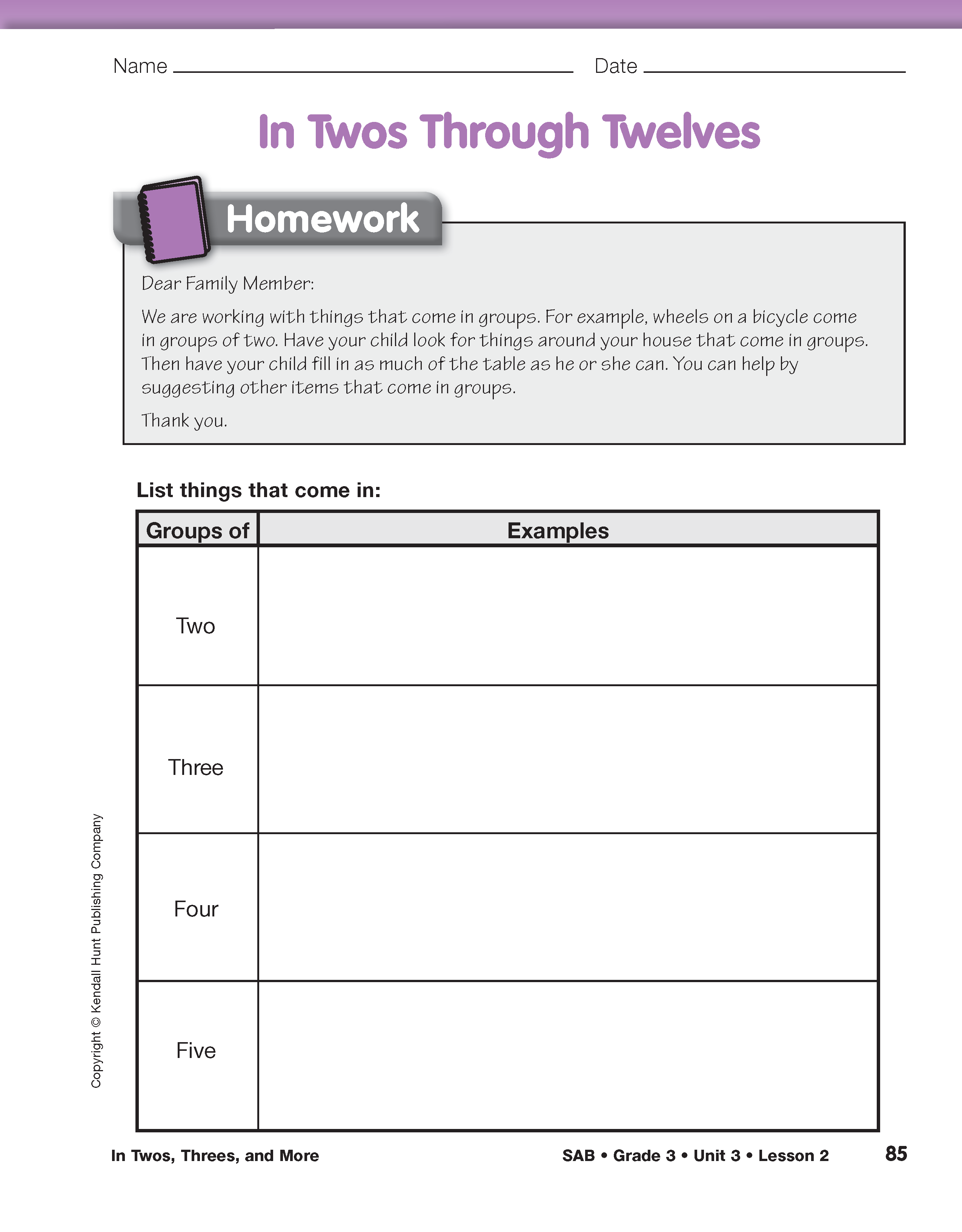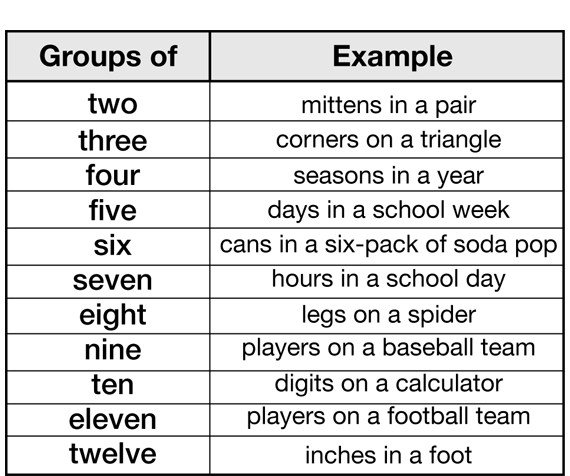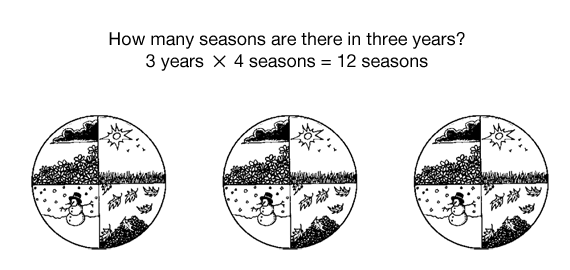In Twos, Threes, and More
Est. Class Sessions: 3Developing the Lesson
Part 2. Write Multiplication Problems
Make Lists. Ask students to form small groups to brainstorm lists of things that come in twos through twelves. They can use the In Twos Through Twelves pages in the Student Activity Book to record their items using words or pictures. Tell them their lists will be used to make problems similar to those you have been discussing. Examples of items they might list are in the table in Figure 1.
Discuss the lists, then combine them into a single class list that you record on chart paper and save for the next day. This list will serve as the basis for the multiplication problems students will create. Suggest that students ask their families to help them think of some additions to the list.
Write Stories and Use Number Sentences. Begin this part by looking at the class list again and asking whether the students have any additions to make. Choose an object from the list and pose a multiplication question. Draw a picture to illustrate the question, write the story in words, and introduce a multiplication sentence for the problem. Figure 2 provides an example.
After modeling this type of story and solution a few times, ask student groups to use their lists to write similar stories on their own. Ask them to record the stories in words on one side of the paper (or index card) and their illustration, solution, and number sentence on the other side. Remind students of the expectations outlined on the Math Practices page in the Student Guide Reference section. As students work, circulate to be sure they are accurately representing the number of groups and the number of items in each group according to the context of their stories.
















